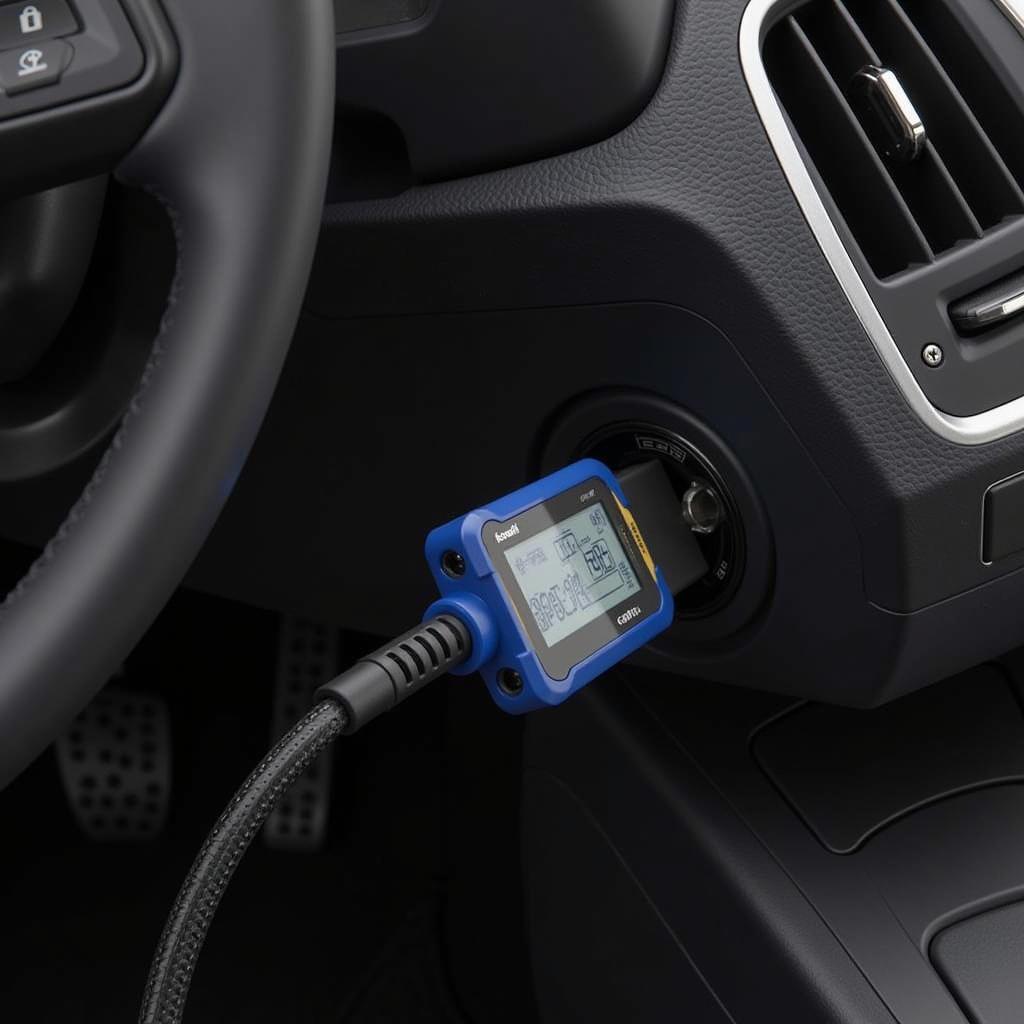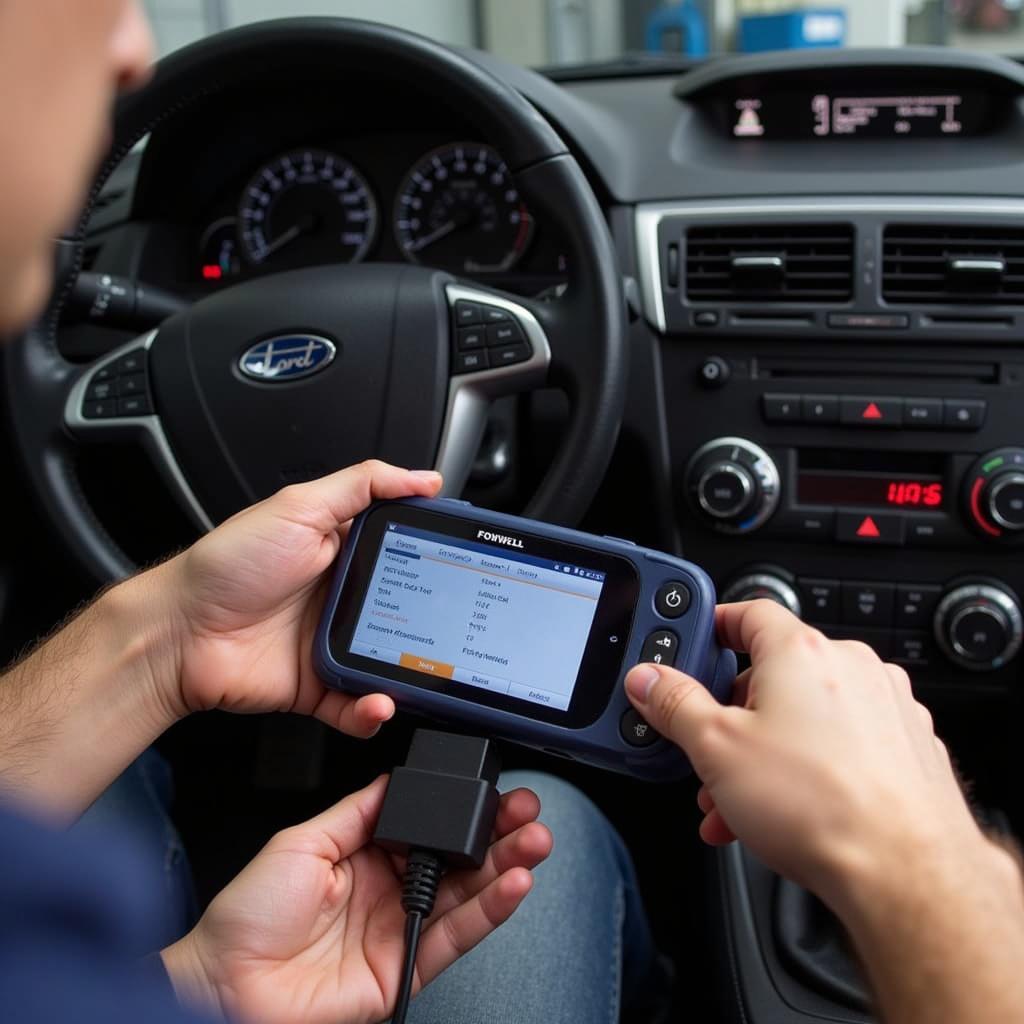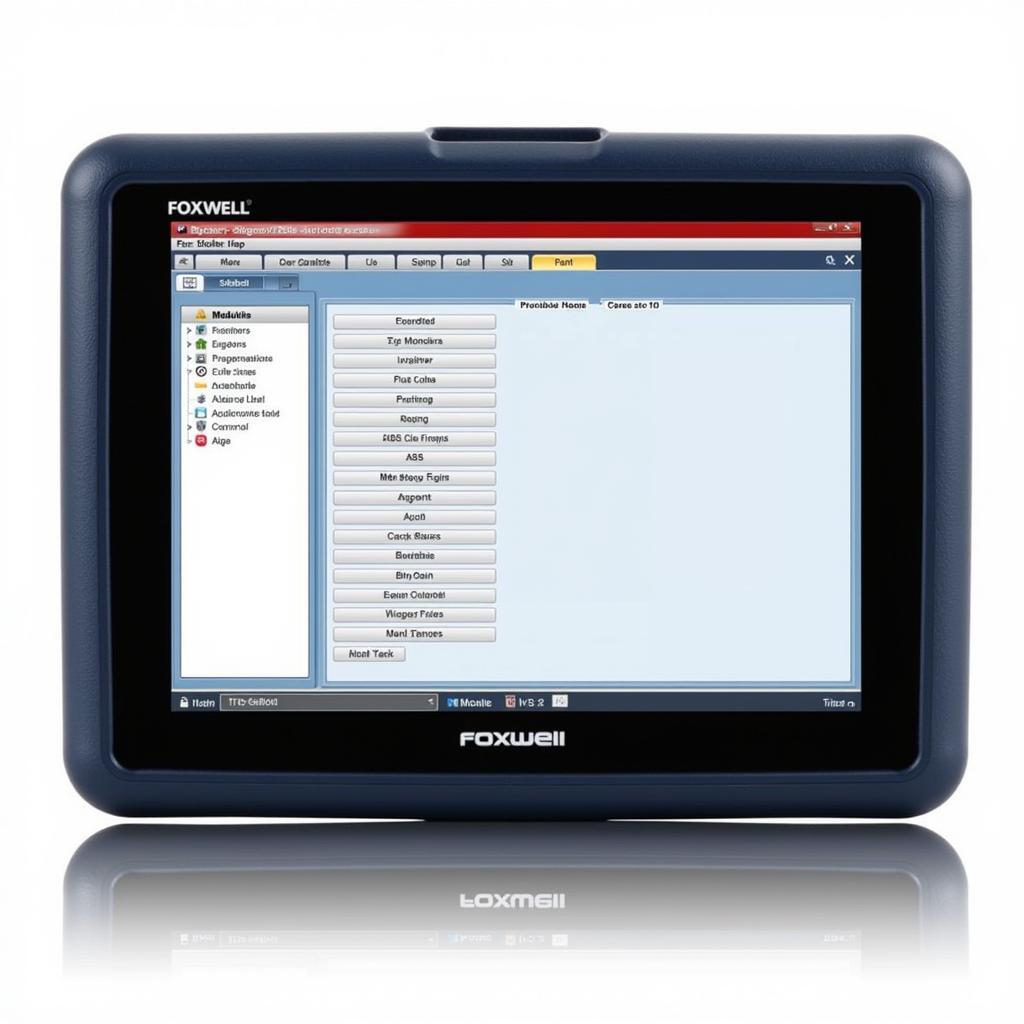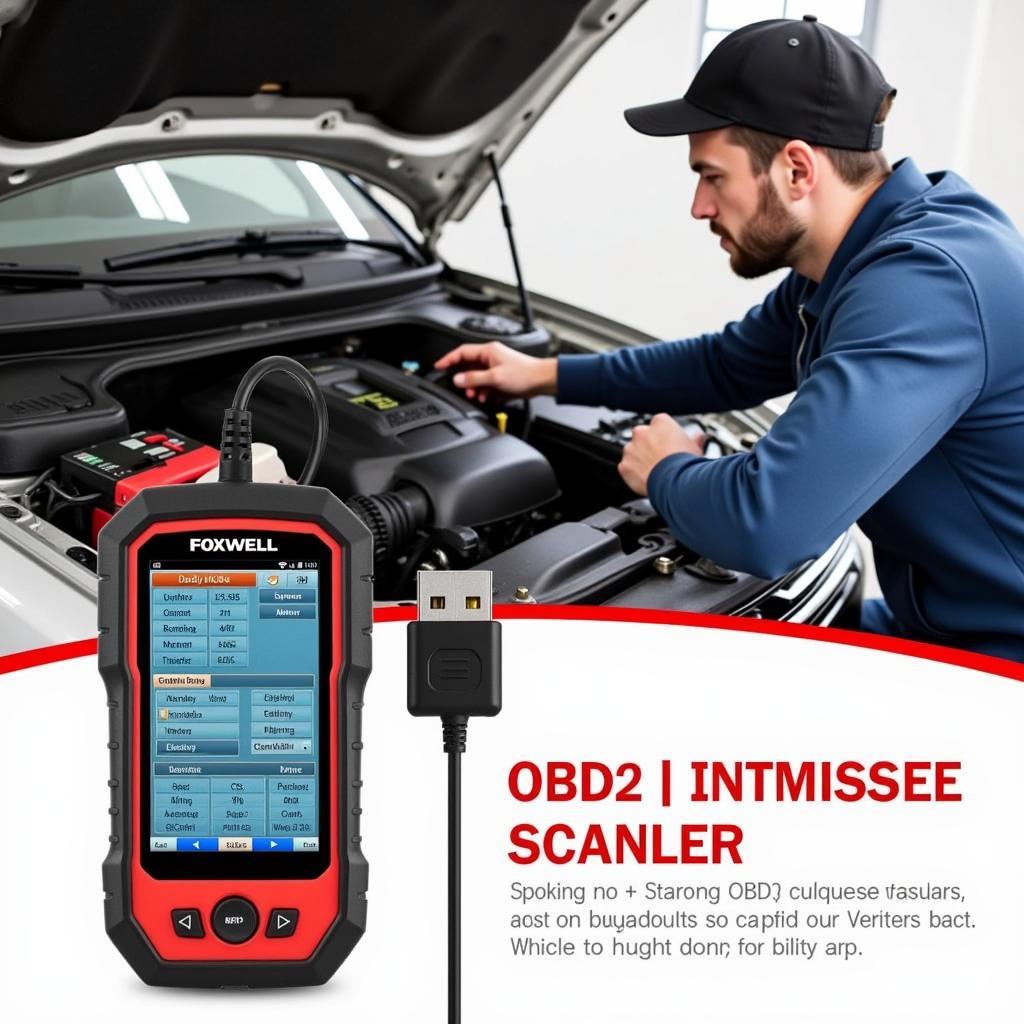The Foxwell NT301 is a popular OBD2 scanner known for its user-friendly interface and ability to read and clear basic engine codes. But did you know it can also be a valuable tool for diagnosing oil pressure problems? This comprehensive guide delves into how you can utilize the Foxwell NT301 to understand your car’s oil pressure, interpret the readings, and troubleshoot potential issues.
Understanding Oil Pressure and Its Importance
Before we delve into the specifics of the Foxwell NT301, let’s understand why oil pressure is crucial for your engine’s health. Engine oil, often referred to as the lifeblood of your vehicle, serves several vital functions:
- Lubrication: Oil forms a thin film between moving engine parts, reducing friction and preventing wear and tear.
- Cooling: Oil absorbs heat generated by the engine and dissipates it, preventing overheating.
- Cleaning: Oil carries away debris and contaminants, preventing sludge buildup.
- Sealing: Oil helps maintain a seal between piston rings and cylinder walls, ensuring optimal compression and combustion.
Maintaining optimal oil pressure ensures these functions are carried out effectively, significantly impacting your engine’s performance, efficiency, and longevity.
How the Foxwell NT301 Reads Oil Pressure
The Foxwell NT301, like most OBD2 scanners, doesn’t directly measure oil pressure. Instead, it retrieves data from your car’s Engine Control Unit (ECU), which continuously monitors various engine parameters, including oil pressure.
By connecting the Foxwell NT301 to your car’s OBD2 port, typically located under the dashboard on the driver’s side, you can access this data.
 Foxwell NT301 plugged into car's OBD2 port
Foxwell NT301 plugged into car's OBD2 port
Here’s how to read oil pressure with the Foxwell NT301:
- Turn the vehicle’s ignition on but don’t start the engine.
- Connect the Foxwell NT301 to the OBD2 port.
- Power on the scanner and select the “Read Codes” or “Live Data” option from the menu.
- Navigate to the “Engine Data” or a similar section where you can find the “Oil Pressure” parameter.
- The screen will display the current oil pressure reading, typically measured in pounds per square inch (PSI).
Interpreting the Foxwell NT301 Oil Pressure Readings
While the Foxwell NT301 provides oil pressure readings, understanding what those readings mean is crucial. Generally:
- Normal Oil Pressure: A healthy engine typically exhibits an oil pressure between 25-65 PSI at idle and higher at operating speeds.
- Low Oil Pressure: Readings consistently below 25 PSI, particularly at idle, could indicate a problem. Low oil pressure triggers the oil pressure warning light on your dashboard.
- High Oil Pressure: While less common, extremely high oil pressure readings (above 75 PSI) can also signify an issue.
Important Note: Oil pressure requirements can vary depending on the make, model, and engine of your vehicle. Refer to your owner’s manual for specific oil pressure specifications.
Common Causes of Oil Pressure Problems
If the Foxwell NT301 reveals oil pressure problems, it’s crucial to identify and address the root cause promptly.
Here are some common culprits:
- Low Oil Level: This is often the simplest and most common cause of low oil pressure. Insufficient oil in the system can’t effectively lubricate and pressurize the engine.
- Worn Oil Pump: The oil pump is responsible for circulating oil throughout the engine. A worn or failing oil pump can’t generate sufficient pressure.
- Faulty Oil Pressure Sensor: The sensor that relays oil pressure data to the ECU might be faulty, leading to inaccurate readings.
- Oil Leaks: Leaks in the oil pan, oil filter, or other engine components can cause a drop in oil pressure.
- Worn Engine Bearings: Worn bearings create excessive clearances, leading to lower oil pressure.
how to read oil pressure foxwell nt301 read oil pressure
Troubleshooting Oil Pressure Issues with the Foxwell NT301
The Foxwell NT301, while primarily a code reader, can indirectly aid in troubleshooting oil pressure problems:
- Check for Engine Codes: The scanner can identify error codes related to the oil pressure sensor, oil control valve, or other components that might indicate a problem.
- Monitor Live Data: Observing live data, especially oil pressure readings at different engine speeds, can provide insights into the severity and potential cause of the issue.
foxwell nt301 codes for cylinder misfire
“The Foxwell NT301 is an excellent starting point for diagnosing oil pressure issues,” says John Miller, a senior automotive technician. “While it might not pinpoint the exact cause, it helps narrow down the potential culprits and guide further investigation.”
When to Consult a Professional
While the Foxwell NT301 can be helpful for initial diagnosis, it’s essential to consult a qualified mechanic if you suspect oil pressure problems.
“Addressing oil pressure issues promptly is crucial to prevent catastrophic engine damage,” advises Miller. “Don’t ignore the warning signs. A professional diagnosis can save you time, money, and potential headaches in the long run.”
Conclusion
The Foxwell NT301, while not a dedicated oil pressure gauge, provides a user-friendly way to access your car’s oil pressure readings. By understanding how to interpret these readings and using the scanner’s diagnostic capabilities, you can gain valuable insights into your engine’s health.
Remember, regular oil changes with the correct oil grade and viscosity are vital for maintaining optimal oil pressure and ensuring your engine’s longevity.
If you need assistance diagnosing or resolving oil pressure issues, don’t hesitate to contact ScanToolUS at +1 (641) 206-8880. Our team of experts is ready to help! You can also visit our office at 1615 S Laramie Ave, Cicero, IL 60804, USA.



